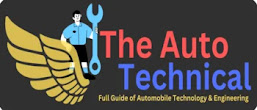What is continuous variable transmission (CVT), What is cvt, how cvt works,
History of Continuous variable transmission (CVT):-
What is Continuous variable transmission (CVT)
Working Principal of Continuous variable transmission (CVT):-
Construction of Continuous variable transmission (CVT):-
1. Input shaft and pulley:-
What Continuous variable transmission (CVT) means
2. Output shaft and pulley:-
Important:-
3. Belt:-
4. EPI cycle gear train:-
How Continuous variable transmission (CVT) works
What is Continuous variable transmission (CVT)
Working of Continuous variable transmission (CVT):-
A
continuously variable transmission (CVT) is a type of automatic transmission
that offers a seamless range of gear ratios without distinct gear steps. The
unique working of a CVT involves a system that continuously adjusts the gear
ratio to optimize engine performance and fuel efficiency. Here's how it works:
Pulley System or Belt-Driven System:
Most modern CVTs use a pulley system or
belt-driven system to vary the gear ratios continuously. This system consists
of two variable-diameter pulleys connected by a metal belt or chain. One pulley
is connected to the engine's output shaft, and the other is connected to the
transmission's input shaft.
Variable-Diameter Pulleys:
Each pulley has two halves that can move in and out, changing their
effective diameter. When the halves move closer together, the pulley's diameter
increases, and when they move apart, the diameter decreases.
Primary Pulley (Driving Pulley):
The primary pulley is connected to the engine's output
shaft and is driven by the engine's power. It adjusts its diameter based on the
engine's RPM and the throttle position, which determines the desired gear
ratio.
Secondary Pulley (Driven Pulley):
The secondary pulley is connected to the transmission's
input shaft and drives the wheels. It adjusts its diameter in response to the
primary pulley's changes, effectively adjusting the gear ratio.
Metal Belt or Chain:
The metal belt or chain connects the two pulleys and transfers
power from the primary pulley to the secondary pulley. As the pulley diameters
change, the belt moves along the pulley faces, effectively creating a varying
gear ratio.
Control System:
A control system, typically using electronic sensors and a computer,
monitors various parameters, such as engine RPM, vehicle speed, throttle
position, and load. Based on this data, the control system adjusts the pulley
positions to find the most efficient gear ratio for the current driving
conditions.
Seamless Gear Ratio Adjustment:
Unlike traditional automatic transmissions with fixed
gear steps, the CVT can continuously adjust the gear ratio, allowing the engine
to operate at its optimal RPM for improved fuel efficiency and performance.
This results in a smooth and seamless driving experience without any noticeable
gear shifts.
Ratio Spread:
CVTs have a wide ratio spread, meaning they can cover a broad range of
gear ratios without discrete steps. This flexibility allows the engine to stay
in its power band, providing smooth acceleration and maintaining efficiency at
various speeds.
The
continuous variation of gear ratios in a CVT provides several benefits,
including improved fuel economy, smoother acceleration, and reduced engine
noise. However, some drivers may find the absence of distinct gear steps less
engaging compared to traditional automatic or manual transmissions.
Nonetheless, the continuously variable transmission remains a popular choice in
many modern vehicles for its efficiency and driving comfort.
Advantages and Disadvantage of Continuous Veritable Transmissions:
Advantage of Continuously Variable Transmission (CVT):
Smooth
and Seamless Driving Experience: One of the significant advantages of a CVT is
its smooth and seamless driving experience. Unlike traditional automatic
transmissions that shift between fixed gear ratios, a CVT can continuously and
infinitely vary its gear ratios without noticeable gear changes. This results
in a smooth acceleration and a constant engine speed, providing a more
comfortable and pleasant ride for passengers.
Disadvantage of Continuously Variable Transmission (CVT):
Limited Power Handling Capacity: While CVTs are excellent for improving fuel efficiency and providing a smooth driving experience, they are not as suitable for handling high levels of torque and power. In high-performance or heavy-duty applications, traditional automatic transmissions or manual transmissions with a fixed gear ratio may be more robust and durable. Some early CVT designs faced reliability issues when used in powerful engines, although modern advancements have addressed many of these concerns. Still, it's essential to consider the specific application and power requirements before opting for a CVT.




.webp)
.webp)

0 Comments